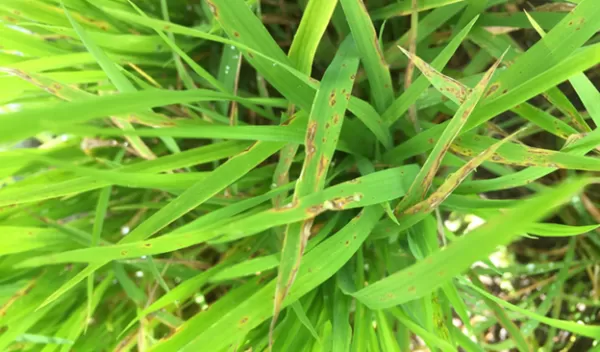
Discovery could lead to new fungicides that protect rice crops
A fungus that plagues rice crops worldwide gains entry to plant cells in a way that makes it vulnerable to simple chemical blockers, a discovery that could lead to new fungicides to reduce substantial annual losses of rice and other valuable cereals.
Each year, blast disease, caused by the fungal pathogen Magnaporthe oryzae, attacks and kills plants that represent between 10% and 35% of the global rice crop, depending on weather conditions.
University of California, Berkeley biochemists led by Michael Marletta discovered that the fungus secretes an enzyme that punches holes in the tough outer layer of rice leaves. Once inside, the fungus rapidly grows and inevitably kills the plant.
In a U.S. National Science Foundation-supported paper published in the journal Proceedings of the National Academy of Sciences, Marletta and colleagues describe the structure of the enzyme and how it works to help the fungus invade plants. Because the enzyme is secreted onto the surface of the rice leaf, a simple spray could be effective in destroying the enzyme's ability to digest the wall of the plant. The scientists are now screening chemicals to find ones that block the enzyme.
"The estimates are that if you could knock out this fungus, you could feed 60 million more people in the world," said Marletta. "This enzyme is a unique target. Our hope is that we'll screen to find some unique chemicals and develop inhibitors for this enzyme."
This target is one of a family of enzymes called polysaccharide monooxygenases, or PMOs, that Marletta and his UC Berkeley colleagues discovered in another, more widespread fungus, Neurospora.
Polysaccharides are sugar polymers that include starch as well as the tough fibers that make plants sturdy, including cellulose and lignin. The PMO enzyme breaks cellulose into smaller pieces, making the polysaccharide susceptible to other enzymes, such as cellulases, and speeding up the breakdown of plant fibers.
The scientists subsequently found hints that some fungal PMOs may do more than merely turn cellulose into food. These PMOs were turned on in the early stages of infection, implying that they're important in the infection process rather than providing food.
They have also found similar PMOs in fungi that attack grapes, tomatoes, lettuce and other major crops; the new findings may have broad applications against plant fungal diseases.
